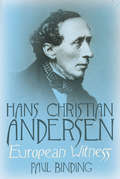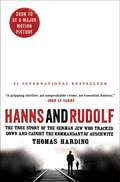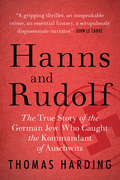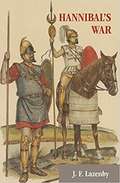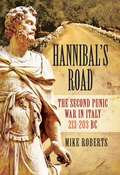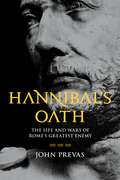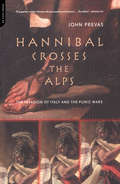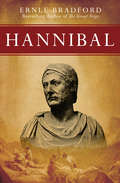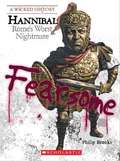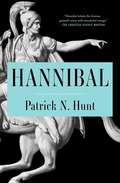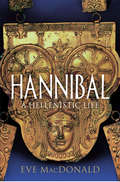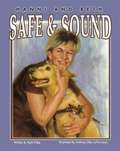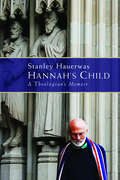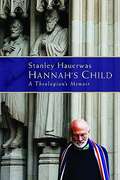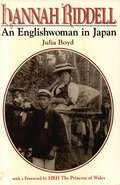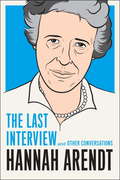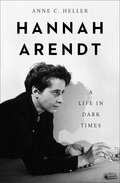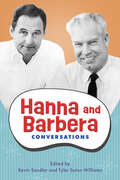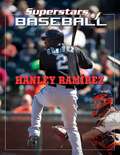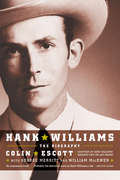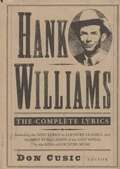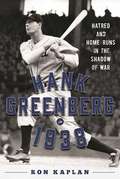- Table View
- List View
Hans Christian Andersen
by Paul BindingRarely does an American or European child grow up without an introduction to Hans Christian Andersen's "The Ugly Duckling," "The Princess and the Pea," or "Thumbelina." Andersen began publishing his fairy tales in 1835, and they brought him almost immediate acclaim among Danish and German readers, followed quickly by the French, Swedes, Swiss, Norwegians, British, and Americans. Ultimately he wrote more than 150 tales. And yet, Paul Binding contends in this incisive book, Andersen cannot be confined to the category of writings for children. His work stands at the very heart of mainstream European literature. The author considers the entire scope of Andersen's prose, from his juvenilia to his very last story. He shows that Andersen's numerous novels, travelogues, autobiographies, and even his fairy tales (notably addressed not to children but to adults) earned a vast audience because they distilled the satisfactions, tensions, hopes, and fears of Europeans as their continent emerged from the Napoleonic Wars. The book sheds new light on Andersen as an intellectual, his rise to international stardom, and his connections with other eminent European writers. It also pays tribute to Andersen's enlightened values-values that ensure the continuing appeal of his works.
Hanns and Rudolf: The True Story of the German Jew Who Tracked Down and Caught the Kommandant of Auschwitz
by Thomas HardingWINNER OF THE WINGATE PRIZE The "compelling," untold story of the man who brought one of Nazi Germany's most notorious war criminals to justice--"fascinates and shocks" (The Washington Post).May 1945. In the aftermath of the Second World War, the first British War Crimes Investigation Team is assembled to hunt down the senior Nazi officials responsible for the greatest atrocities the world has ever seen. One of the lead investigators is Lieutenant Hanns Alexander, a German Jew who is now serving in the British Army. Rudolf Höss is his most elusive target. As Kommandant of Auschwitz, Höss not only oversaw the murder of more than one million men, women, and children; he was the man who perfected Hitler's program of mass extermination. Höss is on the run across a continent in ruins, the one man whose testimony can ensure justice at Nuremberg. Hanns and Rudolf reveals for the very first time the full, exhilarating account of Höss's capture, an encounter with repercussions that echo to this day. Moving from the Middle Eastern campaigns of World War I to bohemian Berlin in the 1920s to the horror of the concentration camps and the trials in Belsen and Nuremberg, it tells the story of two German men--one Jewish, one Catholic--whose lives diverged, and intersected, in an astonishing way. This is "one of those true stories that illuminates a small justice in the aftermath of the Holocaust, an event so huge and heinous that there can be no ultimate justice" (New York Daily News).
Hanns and Rudolf: The True Story of the German Jew Who Caught the Kommandant of Auschwitz
by Thomas HardingShortlisted for the 2013 Costa Biography Award. Part history, part biography, part true crime, Hanns and Rudolf chronicles the untold story of the Jewish investigator who pursued and captured one of Nazi Germany’s most notorious war criminals.May 1945. In the aftermath of the Second World War, the first British War Crimes Investigation Team is assembled to hunt down the senior Nazi officials responsible for the greatest atrocities the world has ever seen. One of the lead investigators is Lieutenant Hanns Alexander, a German Jew now serving in the British Army. Rudolf Höss is his most elusive target. As Kommandant of Auschwitz, Höss not only oversaw the murder of more than one million men, women, and children, but he perfected Hitler’s programme of mass extermination. On the run across a continent in ruins, Höss is the one man whose testimony can ensure justice at Nuremberg. Hanns and Rudolf reveals for the very first time the full, exhilarating account of Höss’s capture, an encounter with repercussions that echo to this day. Moving from the Middle-Eastern campaigns of the First World War to bohemian Berlin in the 1920s to the horror of the concentration camps and the trials in Belsen and Nuremberg, it tells the story of two German men — one Jewish, one Catholic — whose lives diverged, and intersected, in an astonishing way.
Hanns and Rudolf
by Thomas HardingPart history, part biography, part true crime, Hanns and Rudolf chronicles the untold story of the Jewish investigator who pursued and captured one of Nazi Germany's most notorious war criminals.May 1945. In the aftermath of the Second World War, the first British War Crimes Investigation Team is assembled to hunt down the senior Nazi officials responsible for the greatest atrocities the world has ever seen. One of the lead investigators is Lieutenant Hanns Alexander, a German Jew who is now serving in the British Army. Rudolf Höss is his most elusive target. As Kommandant of Auschwitz, Höss not only oversaw the murder of more than one million men, women, and children, but was the man who perfected Hitler's program of mass extermination. Höss is on the run across a continent in ruins, the one man whose testimony can ensure justice at Nuremberg. Hanns and Rudolf reveals for the very first time the full, exhilarating account of Höss's capture, an encounter with repercussions that echo to this day. Moving from the Middle-Eastern campaigns of the First World War to bohemian Berlin in the 1920s to the horror of the concentration camps and the trials in Belsen and Nuremberg, it tells the story of two German men--one Jewish, one Catholic--whose lives diverged, and intersected, in an astonishing way.d through the lives of two men who grew up in parallel and yet opposing German cultures.
Hannibal's War: A Military History of the Second Punic War
by J. F. LazenbyHannibal is acknowledged as one of history’s greatest generals, and his crossing of the Alps—complete with elephants—to make war against Rome on its home soil is legendary. But even Hannibal met his match in Scipio, and ultimately Carthage was defeated by the rising power of Rome. In Hannibal’s War, J. F. Lazenby provides the first scholarly account in English since 1886 solely devoted to the Second Punic War, which some have called the first "world war" for mastery of the Mediterranean world. By closely examining the accounts of Livy and Polybius, supplemented with the fruits of modern research, Lazenby provides a detailed military history of the entire war as it was fought in Italy, Spain, Greece, and North Africa. This edition includes a new preface covering recent research on Hannibal’s war against Rome.
Hannibal's Road: The Second Punic War in Italy, 213–203 BC
by Mike RobertsMany books have been written on the Second Punic War and Hannibal in particular but few give much space to his campaigns in the years from 213 203 BC. Most studies concentrate on Hannibals series of stunning victories in the early stages of the war, culminating at Cannae in 216 BC, then refocus on the activities of his nemesis ,Scipio Africanus, in Spain until the two meet in the final showdown at Zama. But this has led to the neglect of some of the Carthaginian genius most remarkable campaigns. By 212 the wider war was definitely going against the Carthaginians. Yet Hannibal, despite being massively outnumbered and with little support from home, was able to sustain his polyglot army and campaign actively across southern Italy for another ten years. His skilful manoeuvring and victory in numerous engagements kept several veteran armies of the normally aggressive Romans tied up and on the defensive, until Scipios invasion of North Africa pulled him home to defend Carthage. Mike Roberts follows the course of these remarkable events in detail, analysing Hannibals strategy and aims in this phase of the war and revealing a genius that had lost none of its lustre in adversity.
Hannibal's Oath: The Life and Wars of Rome's Greatest Enemy
by John PrevasAccording to the ancient sources, Hannibal was nine years old when his father led him to the temple at Carthage and dipped the young boy's hands in the blood of the sacrificial victim. Before those gods, Hannibal swore an oath of eternal hatred toward Rome.Few images in history have managed to capture and hold the popular imagination quite like that of Hannibal, the fearless North African, perched on a monstrous elephant, leading his mercenaries over the Alps, and then, against all odds, descending the ice-covered peaks to challenge Rome in her own backyard for mastery of the ancient world. It was a bold move, and it established Hannibal as one of history's greatest commanders. But this same brilliant tactician is also one of history's most tragic figures; fate condemned him to win his battles but not his war against Rome.An internationally recognized expert on Hannibal for nearly thirty years, historian John Prevas has visited every Hannibal-related site and mountain pass, from Tunisia to Italy, Spain to Turkey, seeking evidence to dispel the myths surrounding Hannibal's character and his wars.Hannibal's Oath is an easily readable yet comprehensive biography of this iconic military leader--an epic account of a monumental and tragic life.
Hannibal Crosses the Alps: The Invasion of Italy and the Punic Wars
by John PrevasWhen he left his Spanish base one spring day in 218 B. C. with his 100,000-man army of mercenaries, officers, and elephants, Hannibal was launching not just the main offensive of the Second Punic War but also one of the great military journeys in ancient history. His masterful advance through rough terrain and fierce Celtic tribes proved his worth as a leader, but it was his extraordinary passage through the Alps-still considered treacherous even by modern climbers-that made him a legend. John Prevas combines rigorous research of ancient sources with his own excursions through the icy peaks to bring to life this awesome trek, solving the centuries-old question of Hannibal's exact route and shedding fresh light on the cultures of Rome and Carthage along the way. Here is the finest kind of history, sure to appeal to readers of Steven Pressfield's Gates of Fire: alive with grand strategy, the clash of empires, fabulous courage, and the towering figure of Hannibal Barca.
Hannibal
by Ernle BradfordThe life of the great military commander of ancient Carthage from the bestselling author of Thermopylae and Gibraltar. Born in Carthage in 247 BC, Hannibal Barca is considered one of the greatest military commanders of all time. Following the example set by his father, Hamilcar, he dedicated his life to the defeat of Rome. At the outbreak of the Second Punic War, Hannibal famously led an army across the Pyrenees and the Alps to victory against the Romans at the Battle of Trebia. In the years that followed, Hannibal led the Carthaginian war on Rome through some of the most brutal and costly battles in recorded history. In this richly detailed biography, Ernle Bradford tells the story of a great leader whose military strategies have been studied and copied by commanders throughout history, from his own Roman enemies to Napoleon Bonaparte.
Hannibal: Rome's Worst Nightmare
by Philip BrooksA children's biography of Hannibal, who left Tunisia in Africa, crossed the Alps and attacked Rome.
Hannibal
by Patrick N HuntHannibal is &“an exciting biography of one of history&’s greatest commanders…a thrilling page-turner&” (Kirkus Reviews, starred review) about the brilliant general who successfully crossed the Alps with his war elephants and brought Rome to its knees, and who is still regarded today as one of the greatest military strategists in history.Hannibal Barca of Carthage, born 247 BC, was one of the great generals of the ancient world. His father, Hamilcar, imposed Carthaginian rule over much of present-day Spain. After Hamilcar led the Carthaginian forces against Rome in the First Punic War, Hannibal followed in his father&’s footsteps. From the time he was a teenager, Hannibal fought against Rome. He is famed for leading Carthage&’s army across North Africa, into Spain, along the Mediterranean coast, and then crossing the Alps with his army and war elephants. Hannibal won victories in northern Italy by outmaneuvering his Roman adversaries and defeated a larger Roman army at the battle of Cannae in 216 BC. Unable to force Rome to capitulate, however, he was eventually forced to leave Italy and return to Carthage when a savvy Roman general named Scipio invaded North Africa. Hannibal and Scipio fought an epic battle at Zama, which Hannibal lost. Many Carthaginians blamed Hannibal, who was exiled until his death. Hannibal is still regarded as a military genius. Napoleon, George Patton, and Norman Schwarzkopf, Jr. are only some of the generals who studied and admired him. His strategy and tactics are still taught in military academies. &“With wonderful energy…archeologist and historian Patrick Hunt distills his survey of literature about the Second Punic War into a brightly dramatic story that covers virtually every anecdote connected with Hannibal&” (The Christian Science Monitor). &“Hunt&’s story of the doomed general, whose exploits are more celebrated than those of his vanquishers, will appeal to any reader interested in military history or strategy&” (Publishers Weekly).
Hannibal: A Hellenistic Life
by Eve MacDonaldThe life of the great Carthaginian general who marched into Rome during the Second Punic War is reexamined in this revealing and scholarly biography. Once of the greatest military minds of the Ancient World, Hannibal Barca lived a life of daring and survival, massive battles, and ultimate defeat. A citizen of Carthage and military commander in Punic Spain, he famously marched his war elephants and huge army over the Alps into Rome&’s own heartland to fight the Second Punic War. Yet the Romans were the ultimate victors. They eventually captured and destroyed Carthage, and thus it was they who wrote the legend of Hannibal: a brilliant and worthy enemy whose defeat represented military glory for Rome. In this groundbreaking biography, Eve MacDonald employs archaeological findings and documentary sources to expand the memory of Hannibal beyond his military career. Considering him in the context of his time and the Carthaginian culture that shaped him, MacDonald offers a complex portrait of a man from a prominent family who was both a military hero and a statesman. MacDonald also analyzes Hannibal&’s legend over the millennia, exploring how statuary, Jacobean tragedy, opera, nineteenth-century fiction, and other depictions illuminate the character of one of the most fascinating figures in all of history.
Hanni and Beth: Safe & Sound
by Beth FinkeHanni, a Seeing Eye dog, tells how she protects her owner Beth from harm and what people should do when they meet guide dogs on the street.
Hannah's Child: A Theologian's Memoir
by Stanley HauerwasIn this award-winning memoir Stanley Hauerwas gives a frank, transparent account of his own life interwoven with the development of his thought. Unique to this paperback edition is a new afterword that offers Hauerwas's reflections on responses to Hannah's Child.
Hannah's Child: A Theologian's Memoir
by Stanley M. HauerwasA loving, hard-working, godly couple has long been denied a family of their own. Finally, the wife makes a deal with God: if he blesses her with a child, she will dedicate that child to God's service. The result of that prayer was the birth of an influential -- some say prophetic -- voice. Surprisingly, this is not the biblical story of Samuel but the account of Stanley Hauerwas, one of today's leading theologians in the church and the academy. The story of Hauerwas's journey into Christian discipleship is captivating and inspiring. With genuine humility, he describes his intellectual struggles with faith, how he has dealt with the complex reality of marriage to a mentally ill partner, and the gift of friendships that have influenced his character. Throughout the narrative shines Hauerwas's conviction that the tale of his life is worth telling only because of the greater Christian story providing foundation and direction for his own.
Hannah Whitman Heyde: The Complete Correspondence
by Hannah Whitman ["1823-1908"]The correspondence of Hannah Whitman Heyde (1823-1908), younger sister of poet Walt Whitman, provides a rare glimpse into the life of a nineteenth-century woman. Married to well-known Vermont landscape artist Charles Louis Heyde (1820-1892), Hannah documented in letters to her mother, Louisa Van Velsor Whitman (1795-1873), and other family members, her lived experience of ongoing physical and emotional abuse at the hands of her husband. Hannah has long been characterized in biographical and scholarly studies of Whitman’s family as a neurotic and a hypochondriac—a narrative promulgated by Heyde himself—but Walt Whitman carefully preserved his sister’s letters, telling his literary biographer that his intention was to document her plight. Hannah’s complete letters, gathered here for the first time and painstakingly edited and annotated by Maire Mullins, provide an important counternarrative, allowing readers insight into the life of a real nineteenth-century woman, sister, and wife to famous men, who endured and eventually survived domestic violence.
Hannah Riddell
by Julia BoydIn the late nineteenth century hundreds of Christian missionaries were dispatched to Japan to convert the "heathen," a task that many felt could be accomplished within a few decades. That expectation proved to be wildly optimistic, since today fewer than one percent of Japanese are Christian. The efforts and even the names of those early missionaries are now largely forgotten, but the work of one woman, Hannah Riddell, proved to be vital and lasting. While visiting the Honmyoji temple in Kumamoto, Hannah encountered a group of lepers - "in every degree of loathsomeness" - and her life suddenly changed. Though she continued her efforts to save the souls of ordinary Japanese, Hannah became determined to improve the wretched lives of lepers. Against great odds, she founded one of the first modern leprosariums in Japan, but Hannah's iron will and splendid lifestyle soon put her at odds with her English colleagues and their small missionary community was torn apart. Undaunted, Hannah continued her work independently and came to know many of the great figures of Meiji Japan. Hannah's story and that of her niece, Ada, who ran the hospital after her aunt's death until its dramatic closure in 1941, poignantly describe the valiant battle against a terrible disease. At the same time the narrative vividly brings to life early encounters between the Japanese and the English and their very different cultures.
Hannah Riddell
by Julia BoydIn the late nineteenth century hundreds of Christian missionaries were dispatched to Japan to convert the "heathen," a task that many felt could be accomplished within a few decades. That expectation proved to be wildly optimistic, since today fewer than one percent of Japanese are Christian. The efforts and even the names of those early missionaries are now largely forgotten, but the work of one woman, Hannah Riddell, proved to be vital and lasting. While visiting the Honmyoji temple in Kumamoto, Hannah encountered a group of lepers - "in every degree of loathsomeness" - and her life suddenly changed. Though she continued her efforts to save the souls of ordinary Japanese, Hannah became determined to improve the wretched lives of lepers. Against great odds, she founded one of the first modern leprosariums in Japan, but Hannah's iron will and splendid lifestyle soon put her at odds with her English colleagues and their small missionary community was torn apart. Undaunted, Hannah continued her work independently and came to know many of the great figures of Meiji Japan. Hannah's story and that of her niece, Ada, who ran the hospital after her aunt's death until its dramatic closure in 1941, poignantly describe the valiant battle against a terrible disease. At the same time the narrative vividly brings to life early encounters between the Japanese and the English and their very different cultures.
Hannah Arendt: The Last Interview
by Hannah ArendtArendt was one of the most important thinkers of her time, famous for her idea of "the banality of evil" which continues to provoke debate. This collection provides new and startling insight into Arendt's thoughts about Watergate and the nature of American politics, about totalitarianism and history, and her own experiences as an émigré.Hannah Arendt: The Last Interview and Other Conversations is an extraordinary portrait of one of the twentieth century's boldest and most original thinkers. As well as Arendt's last interview with French journalist Roger Errera, the volume features an important interview from the early 60s with German journalist Gunter Gaus, in which the two discuss Arendt's childhood and herescape from Europe, and a conversation with acclaimed historian of the Nazi period, Joachim Fest, as well as other exchanges.These interviews show Arendt in vigorous intellectual form, taking up the issues of her day with energy and wit. She offers comments on the nature of American politics, on Watergate and the Pentagon Papers, on Israel; remembers her youth and her early experience of anti-Semitism, and then the swift rise of the Hitler; debates questions of state power and discusses her own processes of thinking and writing. Hers is an intelligence that never rests, that demands always of her interlocutors, and her readers, that they think critically. As she puts it in her last interview, just six months before her death at the age of 69, "there are no dangerous thoughts, for the simple reason that thinking itself is such a dangerous enterprise."
Hannah Arendt: A Life in Dark Times
by Anne C HellerThe acclaimed biographer presents &“a perceptive life of the controversial political philosopher&” and author of Eichmann in Jerusalem (Kirkus Reviews). Hannah Arendt was a polarizing cultural theorist—extolled by her peers as a visionary and berated by her critics as a poseur and a fraud. Born in Prussia to assimilated Jewish parents, she escaped from Hitler&’s Germany in 1933. Arendt is now best remembered for the storm of controversy that surrounded her 1963 New Yorker series on the trial of Adolf Eichmann, a kidnapped Nazi war criminal. Arendt&’s first book, The Origins of Totalitarianism, single-handedly altered the way generations around the world viewed fascism and genocide. Her most famous work, Eichmann in Jerusalem, created fierce debate that continues to this day, exacerbated by the posthumous discovery that she had been the lover of the philosopher and Nazi sympathizer Martin Heidegger. In this comprehensive biography, Anne C. Heller tracks the source of Arendt&’s contradictions and achievements to her sense of being a &“conscious pariah&”—one of those rare people who doesn&’t &“lose confidence in ourselves if society does not approve us&” and will not &“pay any price&” to gain the acceptance of others.
Hanna and Barbera: Conversations (Television Conversations Series)
by Kevin Sandler and Tyler Solon WilliamsHanna and Barbera: Conversations presents a lively portrait of Bill Hanna and Joe Barbera, the influential producers behind Tom and Jerry, the Flintstones, Scooby-Doo, the Smurfs, and hundreds of other cartoon characters who continue to entertain the world today. Encompassing more than fifty years of film and television history, the conversations in this volume include first-person accounts by the namesakes of the Hanna-Barbera studio as well as recollections by artists and executives who worked closely with the pair for decades. It is the first collection of its kind about Hanna and Barbera, likely the most prolific animation producers of the twentieth century, whose studio once outflanked its competitor Walt Disney in output and influence.Bill Hanna fell into animation in 1930 at the Harman-Ising studio in Los Angeles, gaining skills across the phases of production as MGM opened its animation studio. Joe Barbera, a talented and sociable artist, entered the industry around the same time at the wild and woolly Van Beuren studio in Manhattan, learning the ins and outs of animation art before crossing the country to join MGM. In television, Hanna’s timing and community-oriented work ethic along with Barbera’s knack for sales and creating funny characters enabled Hanna-Barbera to build a roster of beloved cartoon series. A wide range of pieces map Hanna and Barbera’s partnership, from their early days in Hollywood in the 1930s to Cartoon Network in the 1990s, when a new generation took the reins of their animation studio. Relatively unknown when they made over one hundred Tom and Jerry theatrical cartoons at MGM in the 1940s and 1950s, Hanna and Barbera became household names upon entering the new medium of television in 1957. Discussions here chart their early primetime successes as well as later controversies surrounding violence, overseas production, and the lack of quality in their Saturday morning cartoons. With wit, candor, insight, and bravado, Hanna and Barbera: Conversations reflects on Bill and Joe’s breakthroughs and shortcomings, and their studio’s innovations and retreads.
Hanley Ramírez (Superstars of Baseball)
by Tania RodriguezHanley Ramírez has become one of baseball's biggest stars. The young player has only been in the Majors since 2005, but he's already done many things other players only dream of doing. He was named Rookie of the Year, he's played in the All-Star Game three times, he has won awards, and he's made millions playing in the Major Leagues. Read about Ramírez's journey from the Dominican Republic to the MLB. Learn how Ramírez became the player fans love to watch today!
Hank Williams: The Biography
by Colin Escott George Merritt William MacewenIn his brief life, Hank Williams created one of the defining bodies of American music. Songs such as 'Your Cheatin' Heart,' 'Hey, Good Lookin',' and 'Jambalaya' sold millions of records and became the model for virtually all country music that followed. But by the time of his death at age 29, Williams had drunk and drugged and philandered his way through two messy marriages and out of his headline spot on the Grand Ole Opry. Even though he was country music's top seller, Williams was so famously unreliable toward the end that he was lucky to get a booking in a beer hall. Now Colin Escott adds the fruit of several years of impeccable new research to what was already the most full-blooded portrait of Hank Williams. With the benefit of recently discovered legal files, exclusive access to Williams's autopsy, and new research on the singer's final hours, Escott brings to light much that was previously unknown or hidden about Hank Williams.
Hank Williams: The Complete Lyrics
by Hank Williams Don CusicHank Williams was one of the greatest songwriters America has ever known. In the few years of fame before his tragic death in 1953, Williams gave us a songbook of classics--songs of misery and joy, of love won and love lost, of dancing and devotion--including "Your Cheatin' Heart", "Hey, Good Lookin'", and "Cold, Cold Heart". Now comes this collection of lyrics of all his songs--over 140 in all.
Hank Greenberg in 1938: Hatred and Home Runs in the Shadow of War
by Ron Kaplan"Hammerin’” Hank Greenberg was coming off a stellar season where he’d hit 40 home runs and 184 RBIs, becoming only the thirteenth player to ever hit 40 or more homers (and one of only four players to have 40 or more home runs and 175 or more RBIs in a season). Even with his success at the plate, neither Greenberg nor the rest of the world could have expected what was about to happen in 1938. From his first day in the big leagues, the New York-born Greenberg had dealt with persecution for being Jewish. From teammate Jo-Jo White asking where his horns were to the verbal abuse from bigoted fans and the media, the 6-foot-3 slugger always did his best to shut the noise out and concentrate on baseball. But in 1938, that would be more difficult then he could have ever imagined.While Greenberg was battling at the plate, his people overseas were dealing with a completely different battle. Adolf Hitler, who had been chancellor of Germany since 1933, had taken direct control of the country’s military in February of ’38. He then began his methodic takeover of all neighboring countries, spreading Nazism and the early stages of World War II and the Holocaust.Hank Greenberg in 1938 chronicles the events of 1938, both on the baseball diamond and the streets of Europe. As Greenberg’s bat had him on course for Babe Ruth’s home run record, Hitler’s "Final Solution” was beginning to take shape. Jews across the US, worried about the issues overseas, looked to Greenberg as a symbol of hope. Though normally hesitant to speak about the anti-Semitism he dealt with, the slugger still knew the role he was playing for so many of his people, saying "I came to feel that if I, as a Jew, hit a home run, I was hitting one against Hitler.”
